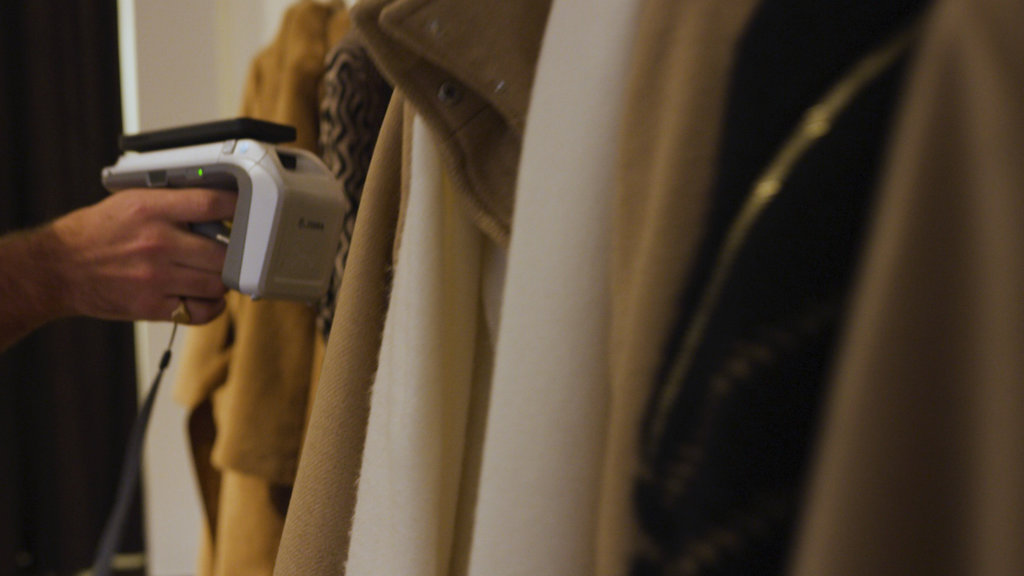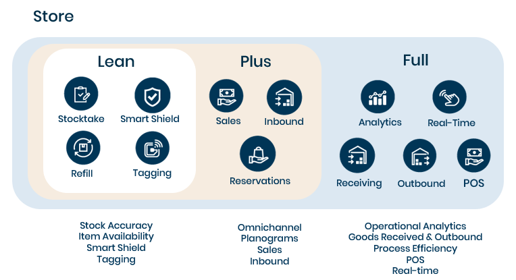RFID isn’t just for big brands anymore - Here are 4 reasons why there’s never been a better time for small and medium sized retailers to take advantage of RFID technology.
4 Reasons RFID is Ready for Smaller Retailers

Radio frequency identification (RFID) has had a fairly long road to adoption in the retail industry. Leading the way on this journey has often been large tier 1 retailers, either investing and experimenting with the technology in-house or partnering with early RFID specialists like Detego.
However, in the more settled retail RFID industry of today, implementing the technology is a different prospect. Here’s 4 reasons why there’s never been a better time for small and medium retailers to reap the benefits of RFID:
1) RFID has Lowered in Cost
Naturally, price point is a huge factor in choosing to implement a new technology for retailers of any size. Like most technologies, RFID was at its most expensive when it was new, but over time has become more and more affordable. This drop in cost is mostly down to the price of RFID tags themselves decreasing significantly. In the early 2000s, tags cost up to $0.75 (Approx. £0.50) whereas these days the average cost is between 3 to 8 cents (so around £0.05).
Developments in hardware and software also make a difference to the price point of RFID projects. For small and medium sized retailers, in particular, the need for only a single handheld reader per store, new hardware like mobile RFID label printers, and the availability of modular cloud-based SaaS solutions can lower the initial investment required to get started with the technology. This combination of industry progress makes leaner, more affordable RFID solutions a reality.

2) The Established RFID Industry Presents Less Risk and Better Knowledge Application
In the early days, RFID projects presented something of a risk. Bigger brands have the resources and personnel for (often in-house) ‘trial and error’ projects, but smaller organisations do not. Now that Retail RFID is an established sub-industry, retailers no longer have to go it alone and have far more options in terms of vendors, partners and solutions. This often means no steep learning curves and more stable and effective digital transformations. In other words, it’s now known what works and what doesn’t work for RFID in the retail industry.
How has RFID become more feasible for retailers over time?
- Expanded and established use cases
- Project stability
- Securing return of investment
- Easy and less expensive implementation
3) RFID Implementation has Become Easier
Historically, implementation has always been a barrier to entry for RFID. This is because adopting RFID is a fairly transformative project, meaning you have to make significant changes to see the significant benefits. Unfortunately, these changes have looked too daunting for many a retailer, especially for smaller brands who don’t have the resources to spare on long projects or clunky transformations. In recent years however, established RFID solutions offer more of a ‘plug and play’ experience.
How has RFID implementation changed for retailers?
- Out-of-the-box solutions
- Cloud-hosted platforms
- Smart shield
- Able to print and encode labels on-site
4) Scalable Solutions are the Perfect Platform for Smaller Retailers to Unlock the Value of RFID
As well as easier implementation, scalable SaaS solutions are now common practise, making RFID projects easier to manage and develop over time. A scalable solution means retailers don’t have to jump straight into the deep end. This makes the technology far more accessible for retailers of all sizes, but perhaps particularly for smaller sized retailer who have a limited technology budget and need to invest over time.
Scalable solutions, like the Detego platform, often focus on core deliverable KPI’s like inventory accuracy and product availability in stores. This is because they provide immediate ROI as well as being the key foundation for many of RFID’s other use cases. One of the main benefits of scalable RFID for smaller retailers is the quickly established ROI can fund the additional investment needed to scale the solution, providing a much easier route to full adoption.
Here’s an example of what a scalable in-store RFID solution (The Detego Store platform) looks like:

Putting It All Together – What an RFID Project Should look Like for a Smaller Retailer.
So, a smaller retailer can take advantage of RFID with only a single handheld reader per store and a lean cloud-hosted RFID solution run through a mobile application. Other than the initial change in production to introduce source-tagging (adding RFID labels at the factory) implementation for such a solution is very minimal. The result of this would be rapid increase in stock accuracy, product availability and a subsequent increase in sales. This type of project provides an almost immediate return of investment, the retailer could then choose to scale and advance their solution at any point or stay with what they have and benefit from a leaner, better managed inventory.
Summary
Not only has the technology matured, including tags, hardware and software, but RFID use cases, best-practise and implantation strategies have now been firmly established. Additionally, the RFID sector is now an established market in its own right, meaning smaller enterprises don’t have to go it alone. By using established and experienced specialist partners, retailers can skip the learning curves and go straight to reaping the benefits of RFID.




Leave a Reply